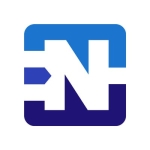What is our primary use case?
It is our main Internet firewall. It is used a lot for remote access users. We also use the site-to-site VPN instance of it, i.e., LSVPN. It is pretty much running everything. We have WildFire in the cloud, content filtering, and antivirus. It has pretty much all the features enabled.
We have a couple of virtual instances running in Azure to firewall our data center. Predominantly, it is all physical hardware.
I am part of the network team who does some work on Palo Alto Networks. There is actually a cybersecurity team who kind of controls the reins of it and does all the security configuration. I am not the administrator/manager in charge of the group that has the appliance.
How has it helped my organization?
With its single pane of glass, it makes monitoring and troubleshooting a bit more homogeneous. We are not looking at multiple platforms and monitoring management tools. It is more efficient from that perspective. It is more of a common monitoring and control system for multiple aspects of what used to be different systems. It provides efficiency and time savings.
What is most valuable?
It is fairly intuitive.
The central management of Panorama actually works. It is what FortiManager aspires to be, but Panorama is usable. You can push config down, do backups, and use templates from other sites, copying them over. The reliability and throughput, plus Panorama's control features, are its main selling features.
It is a combined platform that has different features, like Internet security and the site-to-site VPN. Previously, there were different components that did this. If it was a remote access VPN client, then you would have to go onto one platform and troubleshoot. If it was a site-to-site, it was on a different platform so you would have to go onto that one. It would be different command sets and troubleshooting steps. From that perspective, having that combined and all visible through Panorama's centralized management is probably one of the better benefits.
We had a presentation on Palo Alto Networks NG Firewalls a few years ago. I know the number of CPU cores that they have inside the firewall is crazy, but it is because they have to pack all the performance and analysis in real-time. It is fast. I am always amazed at the small PA-220s and how much performance they have with their full antivirus on it. They can pass 300-megabits per second, and they are just about the size of a paperback book. As far as how that single-pass processing impacts it, I am always amazed at how fast and how much throughput it has.
What needs improvement?
Once in a while, they have new features being released that can be buggy. My criticism is more general to all sorts of network or security devices. In general, everybody is releasing less-tested software. Then, it usually ends up that the first few customers who get a new release need to end up troubleshooting it. That is one of my criticisms because we have been hit by this a few times. I shouldn't single Palo Alto out as any better or worse than anybody else because they are all doing it now.
It is not like we are getting singled out. In some cases, we are looking for a new feature that we want to use. So, we upgrade and use it, and others are too, but the first release will tend to be a little bit buggy. Some of the stuff works great, but it is the newer features that you are usually integrating into your Windows clients where weird stuff happens.
For how long have I used the solution?
I use it every other day.
What do I think about the stability of the solution?
It is pretty reliable. All the services pretty much work. It is not too buggy. With any hardware/software manager these days, when you get new features, they tend to not be too thoroughly tested and can be buggy. We have been noticing this. For example, they had zero-touch deployment and the first few iterations just didn't work. While we have encountered a few bugs, I don't think they are any worse than anything else we get. The underlying hardware seems to be pretty reliable. You can do configuration changes, reboot and reload them, and they just keep coming back and work.
Our cybersecurity guys tend to do the patching and upgrades when they come around. When one of these things had a hard disk failure, they got that restored or replaced. For day-to-day maintenance, other than typical operational changes and troubleshooting, I don't think there is that much maintenance to be done. Every few weeks, there is probably somebody who goes for a few hours and checks the various patch levels and possibly does upgrades.
The upgrades are fairly easy to do. You just download the software, the central management system, and tick off the devices that you want to deploy it to. It will automatically download it. Then, you just sort of schedule a reboot. I don't know how many hours per week or month people put into it, but it is pretty reasonable.
What do I think about the scalability of the solution?
We have about half a dozen core firewalls and 30 to 40 remote firewalls. We haven't hit any scaling limitations yet. What we have is functioning well. At some point, our main firewall in our data center might be overwhelmed, but it has pretty high throughput numbers on it. So far, we haven't hit any sort of limitations. So far, so good.
The physical appliances are sort of tiered. You have your entry-level, which is good for 300-megabits of threat detection. The next ones have 800-megabits of threat detection. So, if you have a site with around 50 people, you can get the entry-level. However, there is always a point that if you have too many users doing too many things then the physical appliance just can't handle it. Then, you need to upgrade to a higher-level appliance. This is expected. When that happens, we will just sort of get the higher-level model or plan for two years of growth to get the right size. Therefore, as far as scalability, it just comes down to planning.
As far as the management platform, that would be more of a case of just adding CPU cores into your virtual machine as well as more memory. So far, we haven't had any scalability limitations. It is possible that we will see it at some point, but we haven't so far.
How are customer service and support?
This is not Palo Alto-specific. It seems to be across all the different vendors that there is a little bit of a hit-and-miss on whether you get a tech person who knows what they are doing and are interested in your problem. When you call frontline support, you can get somebody who doesn't know what they are doing and puts you off. Or the next time you call, you can get a tech who is on the ball and super helpful. This is sort of a smaller problem. It is a bit of a crapshoot on how good the support will be. I would rate the frontline technical support as five or six out of 10.
If it tends to be more of a critical problem, and you involve the sales team, then you are forwarded onto somebody who really knows what they are doing. However, the frontline support can be hit-and-miss. Their second-tier support is really good.
The top-tier support is 10 out of 10. We did have some more serious problems, then they put one of their engineers on it who has been amazing.
Overall, I would rate the technical support as eight out of 10.
How would you rate customer service and support?
Which solution did I use previously and why did I switch?
I did work with Cisco ASA, prior to FireEye, where they purchased and integrated it as sort of the next generation part of their ASA.
One of our remote access solutions for remote access clients was Cisco ASA. That was just getting to its end-of-life. It actually worked quite well. It was pretty hands-off and reliable, but the hardware was getting to end-of-life. Because we had the Palo Alto capable of doing similar functions, we just migrated it over.
It was similar for our site-to-site VPN, which was Cisco DMVPN that we are still using, but we are migrating off it since its hardware is reaching end-of-life. By combining it into the Palo Alto umbrella, it makes the configuration and troubleshooting a bit easier and more homogenous.
Before, it was just different platforms doing sort of similar but different functions. Now, we are using similar platforms and devices rather than having three different solutions. This solution is sort of homogenized; it is sort of all in one place. I suspect that makes security a bit more thorough. Whereas, we had three different platforms before. Some of the delineation isn't clear, as they sort of overlap in some respects to what they do, but having it in one location and system makes gaps or overlaps or inconsistencies easier to spot.
How was the initial setup?
I was gone for a few years when they brought this in.
Adding additional appliances is very straightforward.
What was our ROI?
Having one manager/system with a common interface and commands, rather than three or four, is more efficient.
What's my experience with pricing, setup cost, and licensing?
It is expensive compared to some of the other stuff. However, the value you get out of it is sort of the central control and the ability to reuse templates.
It is a good product, but you pay for it. I think it is one of the more expensive products. So, if you are looking for a cheaper product, there are probably other options available. However, if you are looking for high performance, reliable devices, then it has kind of everything. Basically, you get what you pay for. You can get other firewalls for cheaper and some of the performance would probably be just as good, but some of the application awareness and different threat detections are probably superior on the Palo Alto Networks.
What other advice do I have?
As far as a firewall solution, it is one of the best ones that I have seen. It is fairly expensive compared to some of the other ones, but if you have the money and are looking for a solid, reliable system, then Palo Alto is the way to go.
For what we use it for, the solution is good.
I am part of the network team. There is a cybersecurity team who has control of its reins and does all the security configuration. I am not the administrator of it or a manager in charge of the group with this appliance.
I find the whole machine learning and AI capabilities a bit overhyped. Everybody throws it in there, but I'm actually a little bit suspicious of what it is actually doing.
I don't follow or monitor some of the day-to-day or zero-day threat prevention protection abilities that it has.
I would rate the solution as nine out of 10, as I am always hesitant to give perfect scores.
Disclosure: My company does not have a business relationship with this vendor other than being a customer.
















